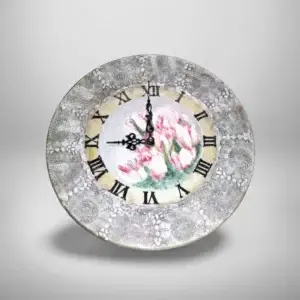Mixed media – a versatile artistic technique
Mixed media is an artistic approach that combines various media and materials within a single artwork. It allows artists to merge multiple techniques and elements to create unique textures, depth, and visual richness. Mixed media may include painting, collage, drawing, printmaking, plaster, textiles, paper, metal, ceramics, and digital elements.
History
The origins of mixed media date back to the early 20th century, when modernist art movements began experimenting with new forms of expression.
Cubists like Pablo Picasso and Georges Braque used collage by combining paintings with cut-out newspaper clippings.
Dadaists such as Marcel Duchamp and Kurt Schwitters incorporated everyday objects and recycled materials into their works.
Surrealists and abstract expressionists expanded the possibilities of mixed media by using materials like sand, fabric, and other unconventional elements in their paintings.
In the second half of the 20th century, mixed media became increasingly popular in contemporary art, thanks to pop art, conceptual art, and postmodernism.
Mixed media styles and techniques
Mixed media can appear in many forms and styles, depending on the artist’s creativity and choice of materials. Key directions include:
1. Collage
One of the oldest and most popular mixed media techniques.
Uses paper, fabric, photos, newspaper clippings, and other printed materials.
Notable artists: Henri Matisse, Kurt Schwitters, Hannah Höch.
2. Assemblage
A three-dimensional technique that uses a variety of objects and materials.
Can include wood, metal, plastic, textiles, and even electronic components.
Marcel Duchamp’s ready-mades are iconic examples of this style.
3. Textured painting and pastes
Artists create raised textures using modelling pastes, sand, plaster, and other compound materials.
Ideal for creating abstract and contemporary works.
4. Mixed media drawing and painting
Traditional drawing and painting techniques combined with markers, charcoal, pastels, ink pens, and watercolours.
Often layered to create depth and complexity.
5. Digital mixed media
A modern approach that blends traditional and digital methods.
Can include digital painting, graphics, photo editing, and 3D elements.
Possibilities and applications
Mixed media is extremely versatile and used in many areas of art:
Painting and graphics – unique artworks using mixed materials and textures to create distinctive effects.
Sculpture and installation – combining different materials and objects into three-dimensional art.
Book art and illustration – artists create interactive and layered illustrations using paper, printmaking, and hand drawing.
Furniture and interior design – creating decorative objects, wall panels, and lighting using a combination of materials and finishes.
Fashion and textile art – widely used in fashion design, where unusual materials and fabric combinations are employed.
Why is mixed media special?
Mixed media offers limitless creative freedom, allowing artists to:
Experiment with various materials
Create deeper and more engaging visual effects
Express their personality and creativity
Combine traditional and contemporary artistic practices
This art form is suitable for both beginners and experienced artists, as there are no restrictions – only imagination defines the final result.

